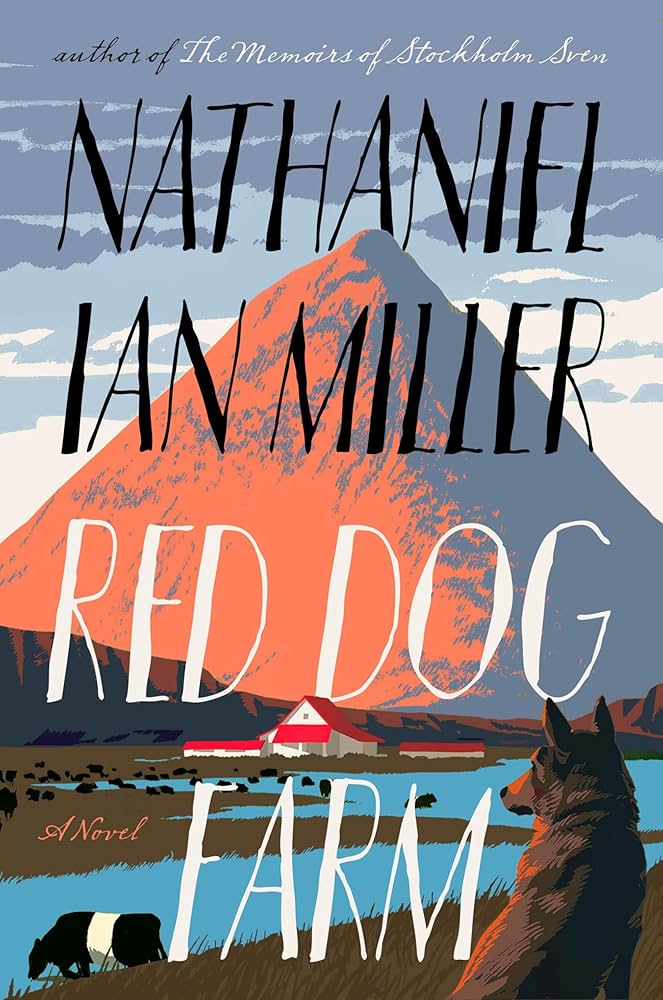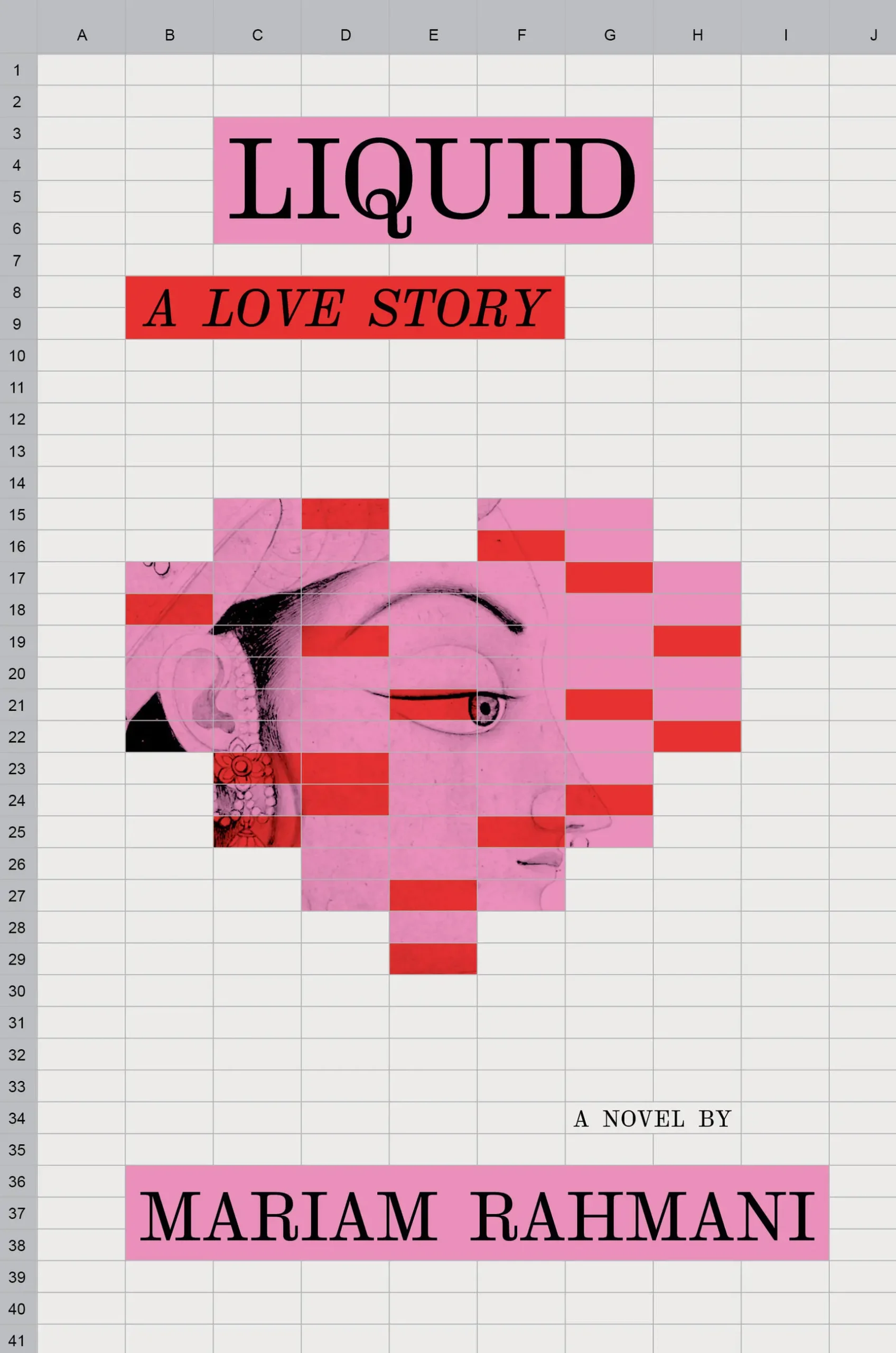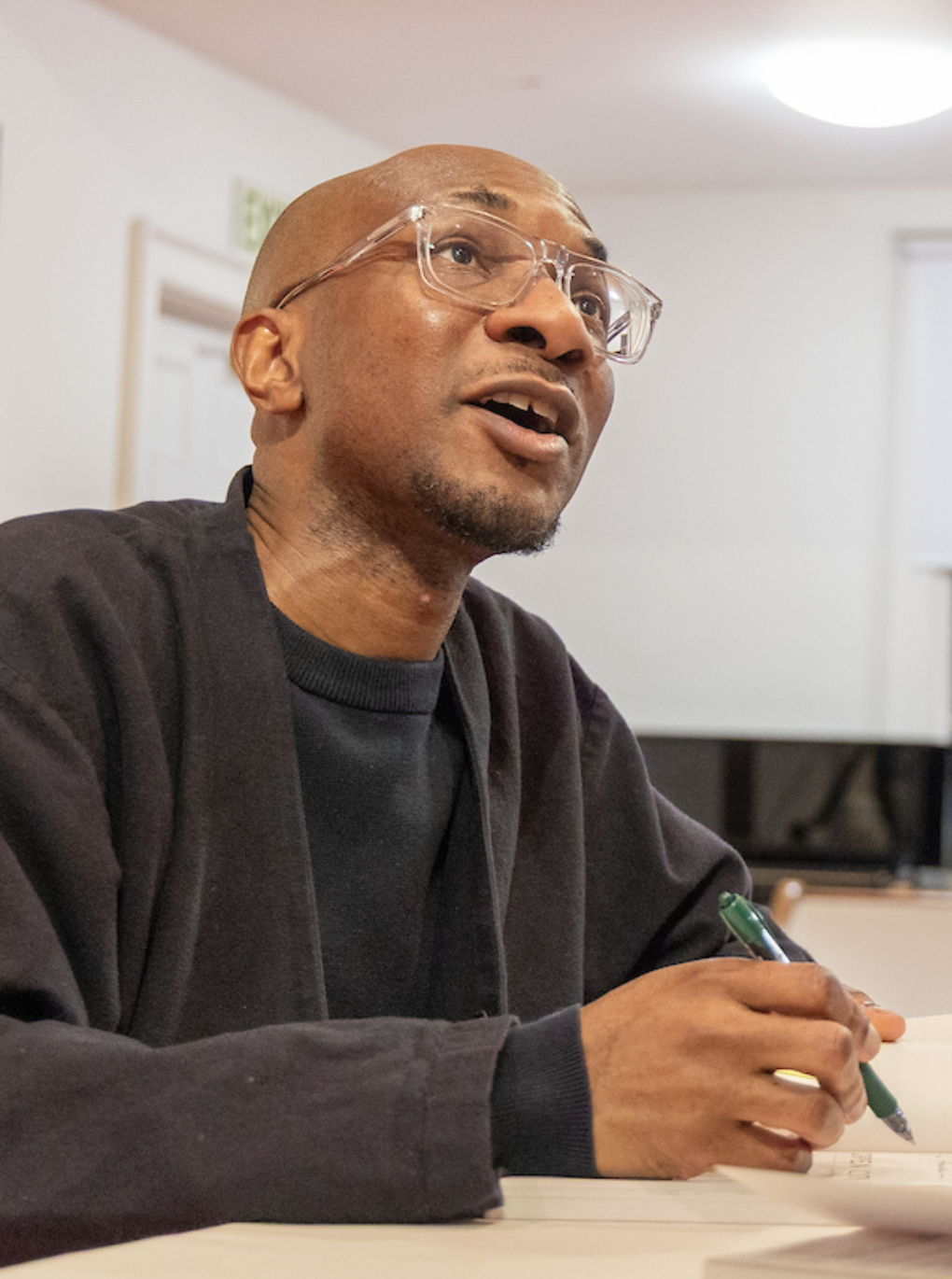HILARY LEICHTER interviews RITA BULLWINKEL

Rita Bullwinkel is the author of the story collection Belly Up (A Strange Object). Her writing has been published in Tin House, Conjunctions, BOMB, Vice, NOON, and Guernica. She is a recipient of grants and fellowships from The MacDowell Colony, Brown University, Vanderbilt University, Hawthornden Castle, and The Helene Wurlitzer Foundation. She is an Editor at Large for McSweeney’s, and lives in San Francisco.
Several years ago, when Rita Bullwinkel left New York City for the West Coast, Hilary Leichter went to her bon voyage party, for which Bullwinkel had purchased and reheated 100 pork buns. They did not have any pork buns on hand for this interview, but talked quite a bit over email about what fills their bellies, both literally and literarily.
Hilary Leichter (HL): Belly Up is a hungry collection of stories. Characters are looking to be fed in their bellies and their souls, to consume and be consumed. Can you talk about your own consumption of fiction and art? What did you eat to create this hungry book? What ate you?
Rita Bullwinkel (RB): I’m a goldfish of a person. Left to my own devices, in a room full of books, I’d read so much it could kill me. That’s where you’ll find find me, Hilary. Just dead under a pile of NYRBs with some newspaper pulp stuck in my throat. I can be terribly indiscriminate. I’m like this cat that my sister adopted when we were kids. The pound named the cat Moose but my sister renamed the cat Mittens and the cat was starved as a very small kitten so that when we adopted Mittens it took Mittens a long while to get the fact that we were going to feed her everyday, and so she just ate anything left out like a total demon. She ate all the garbage. She once ate an entire loaf of sourdough sliced bread, plastic bag and all. We were sure she was going to die. But Mittens lives!
But other times, Hilary, if you can can believe it, at other times I feel as if I have read absolutely nothing, that I know absolutely nothing, that I have read but only a small Weight Watcher’s size portion of literature and the notion that I might ever disclose the contents of my meager helpings is ludicrous and laughable and all the fine New York chefs in their fine New York white chef double breasted button gear will laugh at me, and they will be right to laugh at me, because I am an imbecile. I love Russell Edson. Russell Edson can make you fall in love with a cup of tap water. I hoard his rare Burning Deck printings and look for his books everywhere. My lover’s father is a rare book collector and has strict instructions to check every bookstore he visits for Burning Deck publications. Sometimes my lover texts me photos of stacks of books’ spines where the authors’ surnames on the spines all start with the letter E to show me that he is in a bookstore and he is looking.
HL: I love Russell Edson. There’s something so literal about his writing, which I really respond to. The fantastic elements are often couched in a trick of language, or a literalization of a word or conceit. I love his poem called “Counting Sheep,” where a scientist literally counts sheep, but in a test tube. Some of the stories in your collection, like “Burn,” are conceit-based, and others, like “Harp,” seem to resist “neat” organizing principles entirely, favoring a more variable structure. Do you lean toward a particular approach? How does the story you want to tell inform the structure you choose?
RB: Lindsay Hunter has said of her writing, “I start with a sentence, and I follow it like a road,” which is an approach I utilize frequently. Although sometimes stories start with sounds or images or descriptions that the entire architecture of the story is meant to uphold. And yet, still other stories start with conceits—the idea of something. I find that, for me, conceit driven stories are often the shortest ones. I think this is because if the architecture of a story is based on the foundation of an idea-driven conceit, then it is difficult for me to keep the ball of that idea up in the air for too long. But there are exceptions to this, too. Writing for me, Hilary, (as perhaps it is also for you?) can become about undermining a belief I have about narrative just as soon as I have become confident of its truth and, in my mind, established it.
HL: I feel like I always have a snack or beverage sitting next to me while I write. What are your ideal working conditions? Are you generally nibbling something while you nibble away at a narrative?
RB: I’m a tea drinker. I prefer ginger and turmeric tea and other digestives. I drink a lot of Campari and soda, too, which is delicious, and best drunk with a slice of orange. I also, generally, consume a lot of toast with butter. I prefer to write reclined, either on the couch or in bed.
HL: I love writing while reclining! Can you tell me, what is it about that position that can be so creatively productive?
RB: This is such a good question! I haven’t a clue. I wish I knew. Perhaps it is because it allows my heart to work the least to pump blood to the rest of my body? A position of repose is maybe the easiest time for me to forget I have a body? And to inhabit many bodies, through my fiction, simultaneously?
HL: There are so many truly macabre images in these pages that have stuck with me after reading. A blackened tongue, a zombie giving birth, a man with gouged-out eyes, freshwater bubbles rising through a tracheostomy hole. Are these images generally the seeds for your stories, or do they emerge gradually after writing and revising?
RB: Some stories I write just to get to the images. Other stories I have to get knee deep in before any images appear. For many years, when I was a very young person, I thought I might want to be a painter. I made canvases out of sewed together bits of cloth I found at second hand stores. One painting I made was just a giant fly. The fly hangs in the childhood bedroom of my best friend. I keep visiting her parents during the holidays and thinking the painting will have disappeared, or been thrown away. But it’s still hanging. The giant fly hangs opposite the bed, so it’s the first thing anyone who sleeps in the bed will see when they woke up in the morning.
HL: It makes so much sense to me that you are also a visual artist. In your story “What I Would Be If I Wasn’t What I Am,” the narrator is a painter, and we watch her turn to her art in a more serious way after her spouse has died. Do you think there are things that can only be expressed visually, and not in writing? Or vice versa?
RB: Yes! I do believe this. I think that if the medium doesn’t inform the art, then it is sure to be a failure. One has to be sick with language to be a writer and sick with images to be a painter. The constraints of a medium are intrinsic to how the art will be consumed and therefore how it will exist in the mind of a viewer. For instance, the images of Taryn Simon could never elicit the same feeling through writing. They are too brilliant, too successful, too divine in their current form to ever warrant mimicking through writing.
HL: If you were still painting today, what do you think you would you be working on? Or, What Would You Be If You Weren’t What You Are?
RB: Oh lord. I was not a good painter. I flirted with being a furniture designer. I was attached to the functionality of it. When we spent the most amount of time together in New York, Hilary, between 2011 and 2014, perhaps you remember that I was working for a furniture design company? It was like working at an art gallery. It was about selling the thing, not making the thing. Always about the money. I mostly did shipping. But then I also had a moment where I thought I could work in the textile industry. Weaving, I thought, making fabric, could be a good thing. I lived in India for a time, where the vast majority of the world’s finest fabrics are made, and can speak conversational Hindi, and so I thought that that was maybe something I could do, maybe I should move to Delhi permanently and work for a fabrics company. I don’t think I was very good at any of those things, though. I wouldn’t hire me. I do still like objects, which feels vain. There is something grotesque about liking clothing and kitchen bowls and candlesticks and rugs and seating. But I do like surrounding myself with beautiful things.
Maybe one day I will go back to painting. If I were to paint now, this very moment, today, I would work in cloth, again. I would see if I could make images by sewing cloth together, and then stretching it on canvas bars only after it is been sewed together so that the images was slightly distorted and stretched, like it was being viewed through a piece of warped glass.

HL: Many of the stories in Belly Up deal with the idea of halving or duplicating or devouring the self — I’m thinking particularly of “Harp,” where the narrator wonders if it’s possible to split herself in two, and “Arms Overhead,” where two young girls contemplate the self-consuming ouroboros. In the story “Phylum,” the perspective shifts between two halves of a couple, a man and a woman, but since it’s all written in the first person and without quotation marks or line breaks, it could be read as two halves of the same person. What is it about the idea of mutable identity that fascinates you?
RB: I feel as though I am constantly struggling to find the point at which my body ends and the rest of the world begins. This blurring is most intense for me as it pertains to me and my long time lover. Our communication ranges from telepathic to impossible. I find it very strange to live alone in these discrete brain containers we’ve been relegated to.
HL: I think about the word digestion a lot when I’m reading and teaching fiction. What makes something easy or hard to digest? What makes a story sit in your intestines for seven years, like a hunk of red meat? I love that Reader’s Digest is a thing, and those two words together also feel like a beautiful summary for Belly Up (but without the possessive apostrophe). What was a piece of art that was hard for you to digest? And something easy to digest?
RB: I am very bad at watching television. I get bored so easily. Friends and artists whom I respect and adore seem to have a much better stomach for it. It’s something about standard American television dialogue that I can’t quite handle. Even the Netflix and HBO stuff has it. I find the dialogue insufferable. There are very few exceptions to this for me. It’s not a medium meant for me.
I find most novels written by people who started out as poets to be incredibly propulsive and easy to consume. Some book store somewhere (I can see it but can’t remember its name or location) has a fiction section separated out into, “Previously a Poet” and “The Rest of Fiction.” I feel very sad that Belly Up would be shelved as “The Rest of Fiction,” but that is what she is. I am sentence cult member, like you Hilary, but I’ve never written a poem.
HL: I am indeed a sentence cult member, but I’m also a pop culture hoarder and tend to love everything that emanates from the little black box in my living room. The dialogue that I like best is logically circular and formally strange, and probably mostly comes David Milch or Damon Runyon. I would love to know, which very few TV shows can you stomach, in terms of the dialogue?
RB: The Wire, especially the first season. The first season of The Wire is a work of Shakespearean genius.
HL: You’re one of the ghosts in your story “Clamor.” Or, you’re a zombie living in Florida in your story “God’s True Zombies.” What was your last meal?
RB: For dinner this evening I ate toast with a bunch of toppings: one piece of toast with a creamy cheese and slices of tomatoes, one piece of toast with a spicy blue cheese, and one piece of toast with a delectable spreadable meat that comes in a tube and is made up of a variety of finely chopped cured spicy meats.
HL: So much of Belly Up addresses how people grieve, both for loved ones and for their former and future selves, and for versions of themselves that never were allowed to exist. I feel like I’m living in a constant state of grief in our Current American Climate. How would the characters in your book deal with the daily onslaught of anguish? How do you?
RB: I’m not sure how my characters would grieve this trash fire. I am barely getting through. I try to spend as little time on the internet as possible. I walk a great deal. I spend the vast majority of my days working at a place that is actively combatting some of the garbage out there. It’s an education nonprofit that helps first-generation and low-income youth find scholarships for college. Over twenty percent of the students we support are undocumented. All of their families are, obviously, affected.
Some days I feel as if I am doing the most that I can. I am trying the best that I can. Other days the magnitude and intensity of the trash feels unbearable, and I feel scared, and I feel that I have done nothing, that I will never be able to do anything, and how dare I enjoy a single meal while the world around me is crumbling.
The genius, local Bay Area poet, Tongo Eisen-Martin, wrote this last week after going down to the border: “Watching a couple buses full of kids pull out of the Ursula detention center in McAllen, TX with protestors who got heart, but no superpowers.”
Many days I feel that I am only watching. I hate the feeling of watching.
*
Rita Bullwinkel’s collection Belly Up was released by A Strange Object in May.
*
Hilary Leichter’s first novel, Temporary, is forthcoming from Emily Books/Coffee House Press.
Headshot photo credit: Gabriel Max Starner




